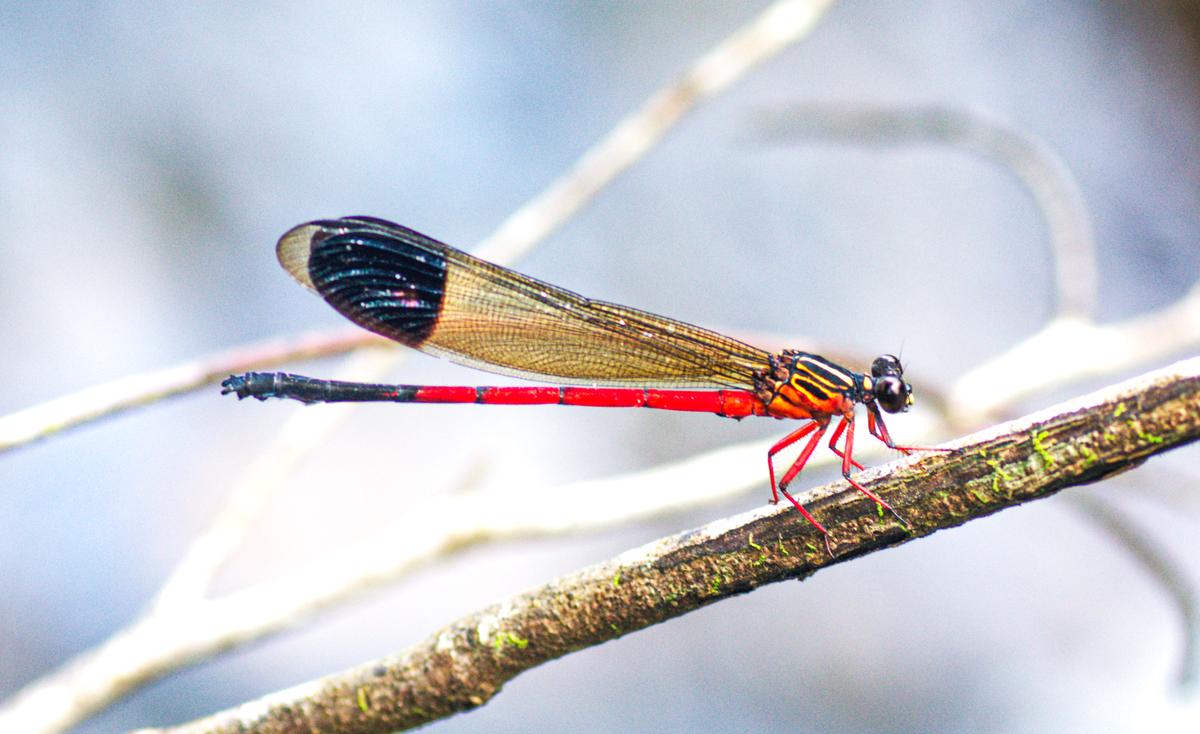Euphaea Wayanadensis
Recently, researchers announced the discovery of a new damselfly species named Euphaea wayanadensis in the Wayanad region of Kerala. This finding marks addition to the biodiversity of the Western Ghats, bringing the total number of odonate species in Kerala to 191 and in the Western Ghats to 223.
Taxonomy and Identification
Euphaea wayanadensis belongs to the family Euphaeidae. The initial sightings occurred in 2013 at the Kalindi River in Wayanad. Over the following years, further observations were made in Wayanad and nearby regions. The species was initially misidentified as Euphaea pseudodispar but was later confirmed as distinct through detailed morphological studies and genetic analysis.
Distinctive Morphological Features
This damselfly species exhibits several unique characteristics. It has a longer black patch on its hind wing compared to related species. Males possess broader and uninterrupted stripes on their bodies. The male genital vesicle shows distinct structural traits, which assists in differentiating it from similar species.
Habitat and Behaviour
Euphaea wayanadensis thrives in fast-flowing streams with rocky beds and abundant aquatic vegetation. It is typically found in evergreen and semi-evergreen forest areas along stream banks. This species is active year-round, except during the dry months of March and April. Its highly restricted habitat makes it susceptible to climate change and habitat loss.
Month: Current Affairs - April, 2025
Category: Environment Current Affairs








